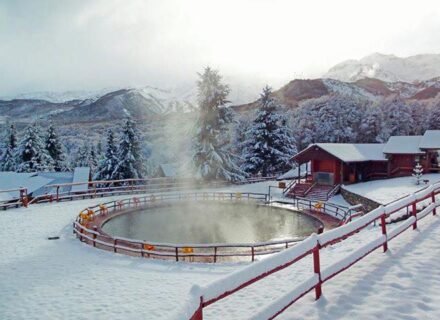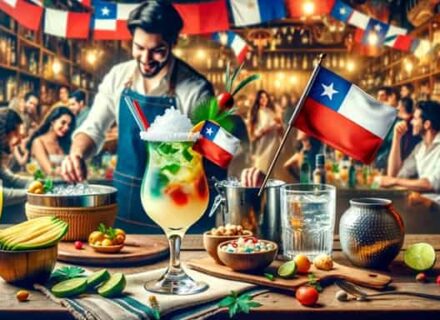Whether you’re living in Santiago or just passing through, the capital of Chile offers a wealth of interesting spots, catering to diverse tastes. In this guide, we’ll walk you through some of the main neighborhoods known for their gastronomy, entertainment, and architecture, each one offering its unique flavor to the city. These districts are must-visit spots that will help you experience the best of Santiago’s local culture.
Barrio Lastarria
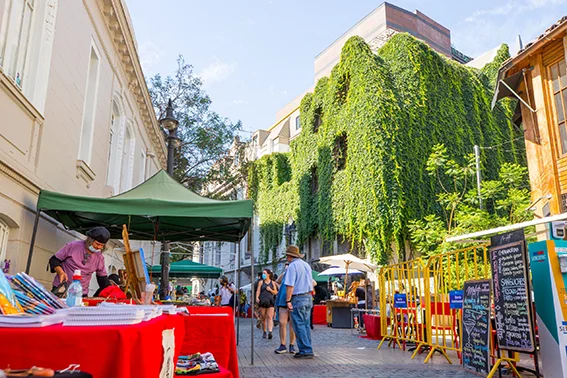
Located in the heart of Santiago, near the Universidad Católica metro station, Barrio Lastarria is undoubtedly one of the city’s most recognized neighborhoods. Known for its multicultural vibe, vibrant gastronomic scene, and charming aesthetics, it’s a must-visit destination for both tourists and locals alike. The streets of Lastarria are lined with artists, coffee shops, restaurants, and craft vendors, giving it an eclectic yet relaxed atmosphere.
In 2018, the Spanish travel section of La Vanguardia named Lastarria one of the “coolest neighborhoods in the world.” Its blend of history, culture, and modernity makes it a favorite spot for those looking to experience the creative pulse of Santiago. The neighborhood is also conveniently located near other popular attractions like Plaza Italia, Cerro Santa Lucía, and Parque Forestal, offering even more to explore within walking distance.
Barrio Bellas Artes
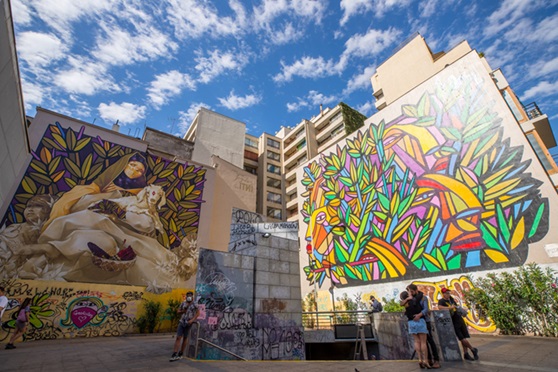
Neighboring Barrio Lastarria is the historical Barrio Bellas Artes, which dates back to the 16th century, soon after the founding of Santiago. One of the neighborhood’s most iconic attractions is the Museo Nacional de Bellas Artes, which houses an impressive collection of both Chilean and international art.
Bellas Artes is the go-to place for art lovers, as it boasts various galleries and cultural spaces that showcase contemporary and classical works. As you wander through its streets, you’ll encounter stunning neoclassical architecture, including landmarks like the Biblioteca Nacional and the Museo de Arte Contemporáneo. The neighborhood’s architectural beauty is complemented by a lively array of cafés, restaurants, independent bookstores, and artisanal shops.
Visitors are also drawn to its cosmopolitan vibe, where street art, food stalls, and spontaneous performances create a dynamic environment for both day and night. Whether you’re an art enthusiast or someone looking to soak in Santiago’s historical richness, Bellas Artes won’t disappoint.
Barrio Italia
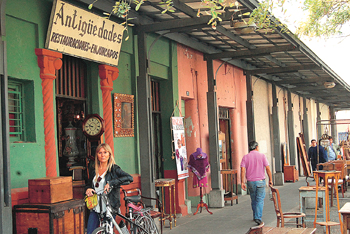
Often referred to as Barrio Santa Isabel, Barrio Italia lies at the junction of the Santiago, Providencia, and Ñuñoa districts. The area is historically significant, having been settled by immigrants, particularly Italians, whose influence is still evident in the local culture and commerce.
Today, Barrio Italia stands out for its diverse culinary offerings, with restaurants serving dishes from all corners of the globe. You can enjoy a range of international cuisines, including Italian, Peruvian, Chinese, Spanish, Indian, Thai, French, and of course, traditional Chilean fare. The mix of cultural influences, both in food and architecture, makes this neighborhood a unique and charming place to explore.
Aside from its culinary diversity, Barrio Italia is known for its antique stores, decorative shops, artisan workshops, and theaters. Many of the craftsmen who settled here in the past are still actively practicing their trades, offering a rare glimpse into the artisanal heritage of Santiago. The streets are bustling with life, and the colorful facades add to the area’s enchanting charm.
Barrio Bellavista
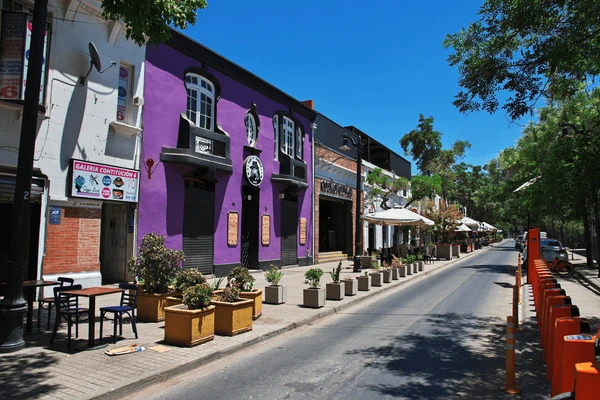
For those seeking Santiago’s bohemian spirit, Barrio Bellavista is the perfect destination. Located between the districts of Providencia and Recoleta, this lively neighborhood is known for its eclectic blend of bars, cultural centers, and international restaurants. Bellavista has long been considered one of the city’s main entertainment hubs.
Bellavista is also a popular spot for university students, as several major universities are located nearby. This youthful energy permeates the streets, where you’ll find an array of affordable eateries, bustling cafés, and a nightlife scene that stretches well into the early hours.
Its central location adds to its appeal, situated just a few blocks from the Baquedano metro station, where lines 5 and 1 converge. Whether you’re there to visit cultural centers or enjoy a night out, Bellavista provides plenty of options to explore and enjoy Santiago’s artistic and alternative side.
Barrio Concha y Toro
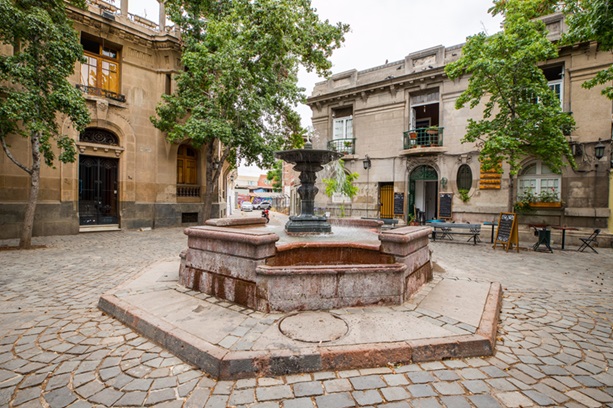
Barrio Concha y Toro, with its cobbled streets and beautifully preserved architecture, offers a journey back in time. Declared a typical neighborhood due to its neoclassical, gothic, art deco, and beaux-arts facades, this area reflects the elegance and wealth of early 20th-century Santiago.
To visit Barrio Concha y Toro, take the metro to República (Line 1), and you’ll be just a short walk away. Once you arrive, you’ll find yourself immersed in an environment that feels distinctly European. The short, curving streets and continuous facades give the area a unique layout compared to other Santiago neighborhoods.
As you wander through, you’ll be struck by the beauty of its mansions, which have been meticulously preserved over the years. It’s the perfect spot for a quiet afternoon walk, offering a peaceful escape from the hustle and bustle of the city. Concha y Toro is an architectural gem that transports visitors to a different era, making it a must-see for lovers of history and design.
Barrio Yungay
Located in the northwestern sector of Santiago, Barrio Yungay is the city’s largest heritage district, brimming with cultural and architectural treasures from the 19th and 20th centuries. In 2009, the neighborhood was declared a Typical Zone by the National Monuments Council, recognizing its historical and cultural significance.
Barrio Yungay gets its name from Chile’s victory at the Battle of Yungay in 1839. Originally, the neighborhood was one of the first high-class residential areas in Santiago, but over time, it experienced socioeconomic shifts, evolving into a more popular neighborhood. Today, its tree-lined streets, picturesque plazas, and well-preserved neoclassical homes make it a delightful area to explore.
The neighborhood is also home to theaters, cultural spaces, and community centers, where a variety of events and activities are held year-round. These venues provide both residents and visitors with opportunities to engage with the neighborhood’s rich cultural heritage. Yungay is easily accessible via the Quinta Normal metro station (Line 5), making it a convenient and rewarding place to visit.
Barrio Franklin
Barrio Franklin is Santiago’s commercial heart, offering a truly authentic local experience. Located in the southern part of the city, this vibrant area is home to over 4,500 stalls selling everything from furniture and clothing to antiques, fruits, vegetables, and a wide range of national and international cuisines.
The bustling atmosphere of Franklin makes it the perfect place to immerse yourself in Santiago’s everyday life. One of the most notable features of the neighborhood is its collection of “mercados persas,” or flea markets, which are housed in old warehouses along Placer Street between San Diego and San Isidro. The Persa Víctor Manuel is the oldest of these markets, specializing in antiques, while Persa Biobío offers over 300 shops selling furniture, electronics, clothing, and tools.
For tech enthusiasts, the Persa Nuevo Placer is the go-to spot, with vendors specializing in computers, tablets, and cell phones. In 2009, the area expanded with the opening of the Persa Paseo Santa Rosa, which features 500 new shops offering antiques, books, clothing, and a food court, making it a one-stop destination for shoppers.
The area is easily accessible via the Bío Bío metro station (Line 6) or Franklin station (Line 2), making it a convenient stop for visitors looking to experience Santiago’s vibrant market culture.
Santiago’s neighborhoods offer a unique window into the city’s history, culture, and daily life. From the artistic charm of Barrio Lastarria to the bohemian allure of Bellavista, each neighborhood has its own distinct character and appeal. Whether you’re a history buff, a foodie, or simply looking to explore the city’s hidden gems, these districts offer something for everyone. So, take a walk through Santiago’s streets, savor the diverse gastronomy, and immerse yourself in the rich cultural tapestry that makes this city so special—you won’t regret it!
